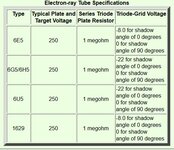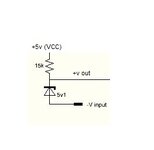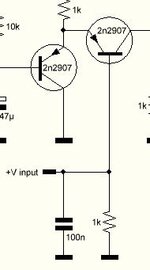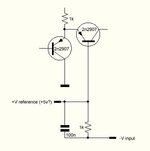neazoi
Advanced Member level 6
Magic eye vacuum tubes required negative voltages on their grids, usually derived from the receiver circuits (https://www.radioremembered.org/tuneye.htm)
That is:
0V to indicate minimum signal
-21V to indicate maximum signal
I am trying to find a way to convert such a negative voltage to a positive one.
That is:
0v to indicate minimum signal
+5v (or greater, no problem I can scale it down with a potential divider) to indicate maximum signal
Is there any simple discrete way to do this?
That is:
0V to indicate minimum signal
-21V to indicate maximum signal
I am trying to find a way to convert such a negative voltage to a positive one.
That is:
0v to indicate minimum signal
+5v (or greater, no problem I can scale it down with a potential divider) to indicate maximum signal
Is there any simple discrete way to do this?




